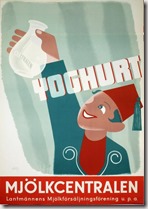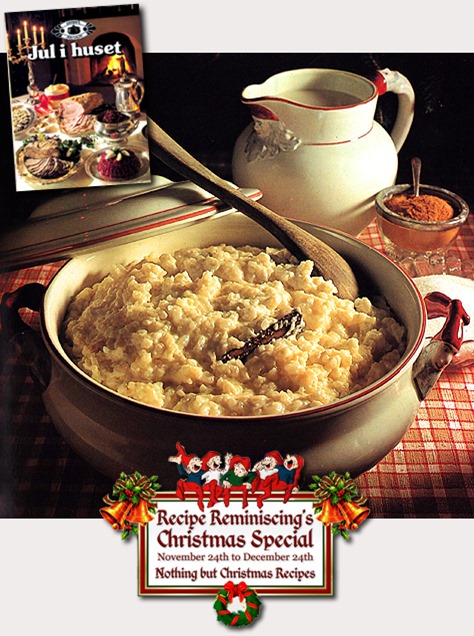
Analysis of the L. delbrueckii subsp. bulgaricus genome indicates that the bacterium may have originated on the surface of a plant. Milk may have become spontaneously and unintentionally exposed to it through contact with plants, or bacteria may have been transferred from the udder of domestic milk-producing animals.
The origins of yogurt are unknown, but it is thought to have been invented in Mesopotamia around 5000 BC.
In ancient Indian records, the combination of yogurt and honey is called “the food of the gods”. Persian traditions hold that “Abraham owed his fecundity and longevity to the regular ingestion of yogurt”.

The cuisine of ancient Greece included a dairy product known as oxygala (οξύγαλα) which is believed to have been a form of yogurt. Galen (AD 129 – c. 200/c. 216) mentioned that oxygala was consumed with honey, similar to the way thickened Greek yogurt is eaten today.
The oldest writings mentioning yogurt are attributed to Pliny the Elder, who remarked that certain “barbarous nations” knew how “to thicken the milk into a substance with an agreeable acidity”. The use of yogurt by medieval Turks is recorded in the books Diwan Lughat al-Turk by Mahmud Kashgari and Kutadgu Bilig by Yusuf Has Hajib written in the 11th century. Both texts mention the word “yogurt” in different sections and describe its use by nomadic Turks. The earliest yogurts were probably spontaneously fermented by wild bacteria in goat skin bags.

Some accounts suggest that Indian emperor Akbar’s cooks would flavor yogurt with mustard seeds and cinnamon. Another early account of a European encounter with yogurt occurs in French clinical history:  Francis I suffered from a severe diarrhea which no French doctor could cure. His ally Suleiman the Magnificent sent a doctor, who allegedly cured the patient with yogurt. Being grateful, the French king spread around the information about the food which had cured him.
Francis I suffered from a severe diarrhea which no French doctor could cure. His ally Suleiman the Magnificent sent a doctor, who allegedly cured the patient with yogurt. Being grateful, the French king spread around the information about the food which had cured him.
Until the 1900s, yogurt was a staple in diets of people in the Russian Empire (and especially Central Asia and the Caucasus), Western Asia, South Eastern Europe/Balkans, Central Europe, and India. Stamen Grigorov (1878–1945), a Bulgarian student of medicine in Geneva, first examined the microflora of the Bulgarian yogurt. In 1905, he described it as consisting of a spherical and a rod-like lactic acid-producing bacteria. In 1907, the rod-like bacterium was called Bacillus bulgaricus (now Lactobacillus delbrueckii subsp. bulgaricus).



The Russian Nobel laureate and biologist Ilya Ilyich Mechnikov (also known as Élie Metchnikoff), from the Institut Pasteur in Paris, was influenced by Grigorov’s work and hypothesized that regular consumption of yogurt was responsible for the unusually long lifespans of Bulgarian peasants. Believing Lactobacillus to be essential for good health, Mechnikov worked to popularize yogurt as a foodstuff throughout Europe.
Isaac Carasso industrialized the production of yogurt. In 1919, Carasso, who was from Ottoman Salonika, started a small yogurt business in Barcelona, Spain, and named the business Danone (“little Daniel”) after his son. The brand later expanded to the United States under an Americanized version of the name: Dannon.
Yogurt with added fruit jam was patented in 1933 by the Radlická Mlékárna dairy in Prague.



Yogurt was introduced to the United States in the first decade of the twentieth century, influenced by Élie Metchnikoff’s The Prolongation of Life; Optimistic Studies (1908); it was available in tablet form for those with digestive intolerance and  for home culturing. It was popularized by John Harvey Kellogg at the Battle Creek Sanitarium, where it was used both orally and in enemas, and later by Armenian immigrants Sarkis and Rose Colombosian, who started “Colombo and Sons Creamery” in Andover, Massachusetts in 1929.
for home culturing. It was popularized by John Harvey Kellogg at the Battle Creek Sanitarium, where it was used both orally and in enemas, and later by Armenian immigrants Sarkis and Rose Colombosian, who started “Colombo and Sons Creamery” in Andover, Massachusetts in 1929.
Colombo Yogurt was originally delivered around New England in a horse-drawn wagon inscribed with the Armenian word “madzoon” which was later changed to “yogurt”, the Turkish name of the product, as Turkish was the lingua franca between immigrants of the various Near Eastern ethnicities who were the main consumers at that time. Yogurt’s popularity in the United States was enhanced in the 1950s and 1960s, when it was presented as a health food. By the late 20th century, yogurt had become a common American food item and Colombo Yogurt was sold in 1993 to General Mills, which discontinued the brand in 2010.
Text from Wikipedia



























![339_Chicken, leek and tarragon pies_post_thumb[2] 339_Chicken, leek and tarragon pies_post_thumb[2]](https://recipereminiscing.files.wordpress.com/2015/02/339_chicken-leek-and-tarragon-pies_post_thumb2_thumb.jpg?w=474&h=411)
![Tickle My Tastebuds Tuesday[4] Tickle My Tastebuds Tuesday[4]](https://recipereminiscing.files.wordpress.com/2015/01/tickle-my-tastebuds-tuesday4.jpg?w=100&h=100)

![Treasure Box Tuesday[4] Treasure Box Tuesday[4]](https://recipereminiscing.files.wordpress.com/2015/01/treasure-box-tuesday41.jpg?w=100&h=99)





















